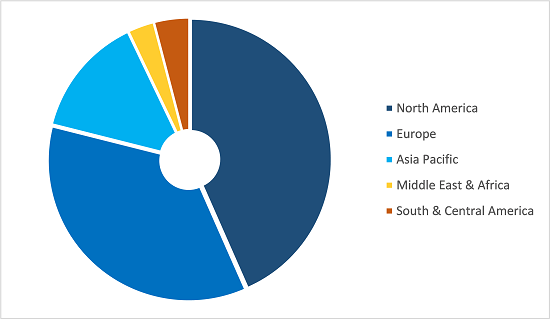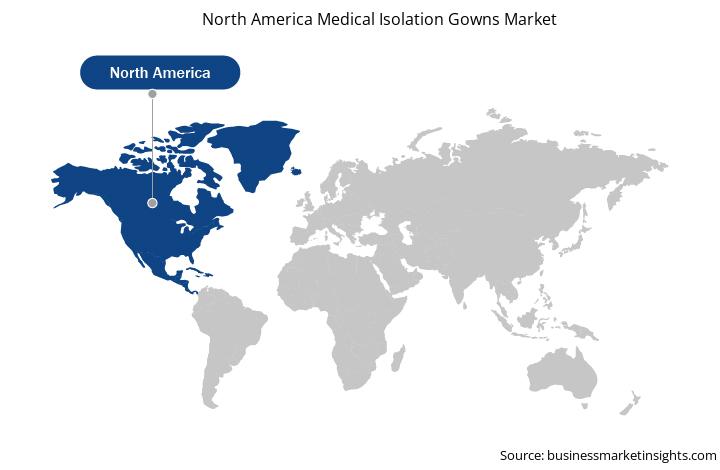Patients acquire hospital-acquired infections or healthcare-associated infections (HAIs) while receiving health services in a hospital or any other healthcare facility. Common pathogens, such as bacteria, viruses, fungi, and parasites, cause these infections. HAIs include catheter-associated urinary tract infections, surgical site infections (SSI), central line-associated bloodstream infections, ventilator-associated pneumonia, hospital-acquired pneumonia, and several other infections. Many surgical devices can act as HAI spreaders as well. Isolation gowns are mandatory to use during any medical procedures in healthcare facilities. They help prevent cross-contamination, transfer of body fluids, and any infection-causing microorganisms and penetration of liquids. Government agencies, such as the National Healthcare Safety Network (NHSN) of the Center for Disease Control and Prevention (CDC), closely monitor the infections that help prevent HAI and enhance patient safety. In the US, the Department of Health and Human Services (HHS) works toward reducing HAI cases. For instance, a survey, titled “awareness of HAIs amongst medical students in a tertiary care center,” reported that a total of 82% (out of 250) students were aware of HAIs. Due to the increasing awareness, robust preventative measures, and the implementation of infection surveillance measures in hospital settings, the prevalence of HAIs is reducing significantly. Therefore, it is established that the rise in awareness regarding HAIs is increasing the demand for medical isolation gowns substantially across the region, leading to an upward thrust in the market’s growth.
The COVID-19 pandemic outbreak was first observed in December 2019 in Wuhan (China), and it has spread to ~100 countries across the world, with the World Health Organization (WHO) stating it as a public health emergency. In the North American region, the US was profoundly affected by the outbreak of the COVID-19 pandemic. The country has marked the highest number of positive patients. Across the nation, various healthcare research centers were working only for research on COVID 19 therapeutics. Additionally, during the initial phase of the COVID-19 crisis, due to lockdown and supply chain disruptions, the demand for Medical Isolation Gowns was disrupted owing to a change in customer behaviors. As the problem moved forward, healthcare professionals realized that developing novel therapies using innovative technologies is essential to mitigate this unprecedented crisis. In the middle of this situation, governments around the world were not prepared for such a pandemic. There is no definitive treatment against COVID 19 has been established. Medical isolation gowns are among the highly consumed hospital consumables. The hospitals utilize a larger quantity of medical isolation gowns during the COVID19 pandemic and for general patients. There has been an immense rise in the demand for medical isolation gowns in the regions. To overcome this shortage, regulatory agencies such as USFDA have given revised guidelines regarding surgical gowns. The agency has also liberalized the product approval procedures to facilitate early product availability in the market. Various market players of non-healthcare businesses are taking involvement in the medical isolation gowns' productions to fulfill the high demand. The existing players are ramping up the production and supply chain for the medical isolation gowns in the region. For instance, Ferrara Manufacturing, located in New York City's historic Fashion District, has been producing Olympic uniforms for Team USA, runway garments, and formal suiting for several major luxury brands since 1987. In March 2020, however, Ferrara Manufacturing shifted its garment production from high-end fashion to medical isolation gowns for the frontline worker. Also, Accel Unite had recently developed a new design for reusable isolation gowns. Dow collaborated with nine key partners across various industries to develop and donate 100,000 isolation gowns to help frontline workers in Texas, Louisiana, and Mexico. Thus, new players' innovative product development is expected to create healthy market competition in the North American medical isolation gowns market.
With the new features and technologies, vendors can attract new customers and expand their footprints in emerging markets. This factor is likely to drive the medical isolation gowns market. The North America medical isolation gowns is expected to grow at a good CAGR during the forecast period.

Strategic insights for the North America Medical Isolation Gowns provides data-driven analysis of the industry landscape, including current trends, key players, and regional nuances. These insights offer actionable recommendations, enabling readers to differentiate themselves from competitors by identifying untapped segments or developing unique value propositions. Leveraging data analytics, these insights help industry players anticipate the market shifts, whether investors, manufacturers, or other stakeholders. A future-oriented perspective is essential, helping stakeholders anticipate market shifts and position themselves for long-term success in this dynamic region. Ultimately, effective strategic insights empower readers to make informed decisions that drive profitability and achieve their business objectives within the market.

| Report Attribute | Details |
|---|---|
| Market size in 2021 | US$ 518.34 Million |
| Market Size by 2028 | US$ 1,385.93 Million |
| Global CAGR (2021 - 2028) | 15.1% |
| Historical Data | 2019-2020 |
| Forecast period | 2022-2028 |
| Segments Covered |
By Type
|
| Regions and Countries Covered | North America
|
| Market leaders and key company profiles |
The geographic scope of the North America Medical Isolation Gowns refers to the specific areas in which a business operates and competes. Understanding local distinctions, such as diverse consumer preferences (e.g., demand for specific plug types or battery backup durations), varying economic conditions, and regulatory environments, is crucial for tailoring strategies to specific markets. Businesses can expand their reach by identifying underserved areas or adapting their offerings to meet local demands. A clear market focus allows for more effective resource allocation, targeted marketing campaigns, and better positioning against local competitors, ultimately driving growth in those targeted areas.

The North America Medical Isolation Gowns Market is valued at US$ 518.34 Million in 2021, it is projected to reach US$ 1,385.93 Million by 2028.
As per our report North America Medical Isolation Gowns Market, the market size is valued at US$ 518.34 Million in 2021, projecting it to reach US$ 1,385.93 Million by 2028. This translates to a CAGR of approximately 15.1% during the forecast period.
The North America Medical Isolation Gowns Market report typically cover these key segments-
The historic period, base year, and forecast period can vary slightly depending on the specific market research report. However, for the North America Medical Isolation Gowns Market report:
The North America Medical Isolation Gowns Market is populated by several key players, each contributing to its growth and innovation. Some of the major players include:
The North America Medical Isolation Gowns Market report is valuable for diverse stakeholders, including:
Essentially, anyone involved in or considering involvement in the North America Medical Isolation Gowns Market value chain can benefit from the information contained in a comprehensive market report.